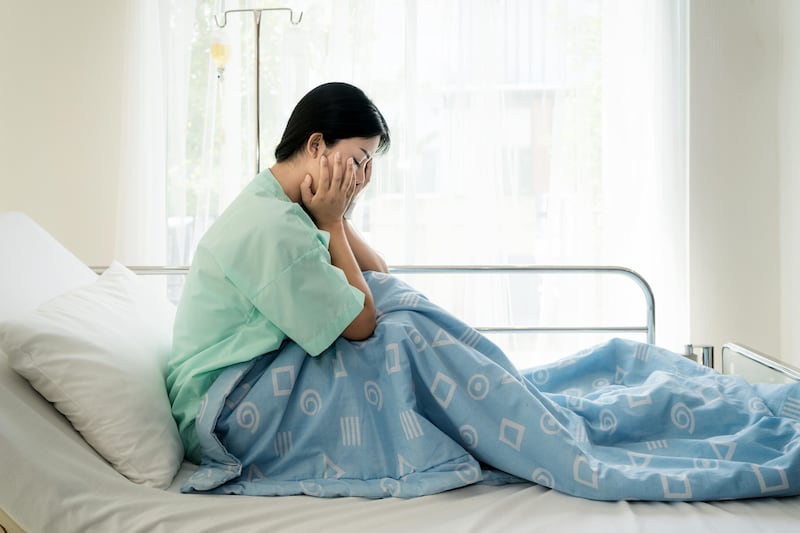SITTING in A&E, with piercing pain radiating across his forehead and his left eye, David Hadfield clutched his head, struggling to work out what was going wrong.
The answer emerged during his hour-long wait at Manchester Eye Hospital. A "bumpy, burning rash" began to develop down one side of his forehead, just above his left eye and eyebrow, a symptom which immediately "gave the game away" to doctors examining him: he had shingles.
"I was absolutely astounded," says David (76), who lives in Cheshire. "I didn't know much about the condition, but I certainly didn't think it could affect your face or eyes. It came out of nowhere."
Four months on — six weeks of which was spent in a darkened room to prevent light aggravating his sensitive eye — David was still in agony and relying on large doses of powerful painkillers.
"You'd think that when the rash goes, which it did after about 10 days, the pain would go away, too," says David.
"But it has just carried on and on. There were days when I thought my eye socket was on fire because the pain was so bad. You start to think: will it ever go away?"
Shingles is a common infection caused by the reactivation of varicella zoster, the virus that triggers chickenpox. It can lie dormant in the body for years, but if your immune system is compromised the virus can escape, travelling along nerves to the skin, producing the signature blister-like rash.
While the visible signs of the virus tend to clear within a week or so, around 14 per cent of patients are left with severe nerve pain, known as post-herpetic neuralgia, which can last for up to a year and may even become permanent.
"The problem is that there aren't any good treatments for shingles pain," explains Tony Pickering, a professor of neuroscience and anaesthesia at Bristol University.
"And, unfortunately, I have seen patients who even 20 years down the line are still suffering with some kind of pain."
It's why Professor Pickering and other researchers at Bristol, Oxford, Southampton and Warwick universities, are launching a major trial — the Athena Shingles Study — treating newly diagnosed cases with amitriptyline (a type of antidepressant that at lower doses is used to treat nerve pain) to try to prevent post-herpetic neuralgia.
A small study in 1997 suggested taking amitriptyline early may help, but the researchers say this new study will be the largest on the subject.
For 80 per cent of those who catch chickenpox, the virus resides in the body without causing problems, explains Dr Ashish Gulve, a consultant in pain medicine at The James Cook University Hospital in Middlesbrough and medical advisor to the Shingles Support Society.
"However, in some people, perhaps decades later, the virus is reactivated, possibly because of advancing age — shingles is most common in the over-70s — or due to a compromised immune system which makes it harder to fight infection."
Diseases and treatments that weaken the immune system, such as type 2 diabetes and chemotherapy, can also allow the virus to become active.
(Being exposed to chickenpox again shouldn't be a risk. In fact, research published in the BMJ in 2020 found that adults exposed to a child with chickenpox are around 30 per cent less likely to develop shingles for up to 20 years, possibly because re-exposure to the virus boosts immunity to shingles.)
Shingles can appear in any nerve in the body and, once the virus is reactivated, the affected nerve starts sending pain signals even if there is no rash.
"The hypersensitivity can be so acute that some patients can't even touch the affected area," says Dr Gulve. "Even a cold breeze can set off pain."
David's problem began when he woke one morning with a headache unlike any he'd had before. Two days of taking ibuprofen had no effect and he soon felt an agonising, burning pain around his left eye.
After his diagnosis, David, a former business executive, was prescribed gabapentin, which is a medication used to treat nerve pain, as well as antivirals.
David's vision was unaffected, but the pain in his eye, forehead and eye socket was "terrible".
"I'm a very busy and sociable person, but overnight I became someone who had to sit at home with the curtains closed all day, covering my bad eye with my hand as a way of trying to head off this awful pain," he says.
"It literally felt like my eye and my forehead were burning. It also felt like something was sticking in my eye, which had become bulbous and swollen."
At one point, David was taking 18 tablets a day.
Professor Pickering says "throwing the kitchen sink" at post-herpetic neuralgia may not help and the drugs themselves have potential side-effects.
"That is why we are interested in prevention with amitriptyline," he adds.
Dr Gulve says the lack of effective treatments for the long-term pain means it's important that patients seek help quickly if they suspect it might be shingles as antivirals can stop the virus replicating.
The virus damages nerves, and the longer it's around then the more damage it can do, says Professor Pickering.
"The pain is the result of this damage to nerve cells. Therefore, if antivirals reduce the replication of the virus and speed its elimination, they should hasten the end of the shingles and reduce the risk of long-term pain.
"However, this has not been convincingly demonstrated in studies, possibly because of the damage already done by the virus before people go to their GP — so we would encourage patients to go to their GP as early as possible."
One study, updated in the Journal of Medical Virology in 2021, found that only 54 per cent of patients received antiviral treatment within 72 hours. Antivirals need to be given in the first few days of infection.
"A key issue is lack of recognition," says Matthew Ridd, a professor of primary healthcare at Bristol University and one of the leaders of the Athena study.
"Patients may not realise they have a problem that needs to be seen quickly, or that the rash is connected to also feeling under the weather, or other symptoms such as a headache," he says. That creates a delay in diagnosis and treatment.
"Shingles presents as a rash on one side of the body, and pain in the area may precede the rash — which won't cross the midline," he says (in layman's terms, the nerves run down the body, rather than across). "There might also be general malaise."
As well as long-term pain, shingles can also lead to a raised risk of cardiovascular problems. The theory is the virus causes vascular changes which lead to blockages in the blood vessels.
A study published by Brigham and Women's Hospital in the US in November found shingles was linked to an almost 30 per cent increased risk of heart attacks or strokes in those without previous cardiovascular problems.
There is no cure for shingles, but a vaccine, Zostavax, is available on the NHS to anyone in their 70s. But uptake rates in England dropped from 61.8 per cent of 70-year-olds in 2013/14 to 26.5 per cent in 2019/20, largely because of a lack of access to GPs during the pandemic.
"If your GP hasn't invited you to have it, ask for it," advises Marian Nicholson, director of the Herpes Viruses Association and Shingles Support Society.
Today, David is "slowly getting back to normal".
But he adds: "I still have a burning sensation around my forehead and a feeling that something is sticking in my left eye. I wouldn't wish what I've been through on anyone."
:: The Athena trial is recruiting recently diagnosed patients: athena-study.bristol.ac.uk.
© Solo dmg media






